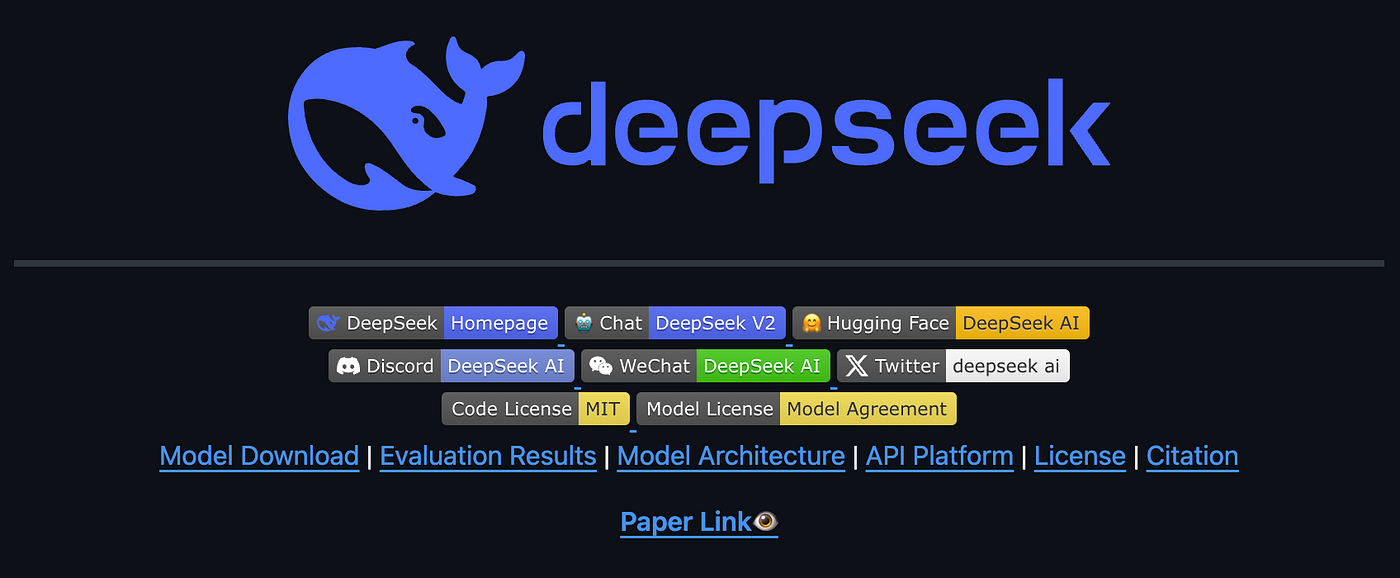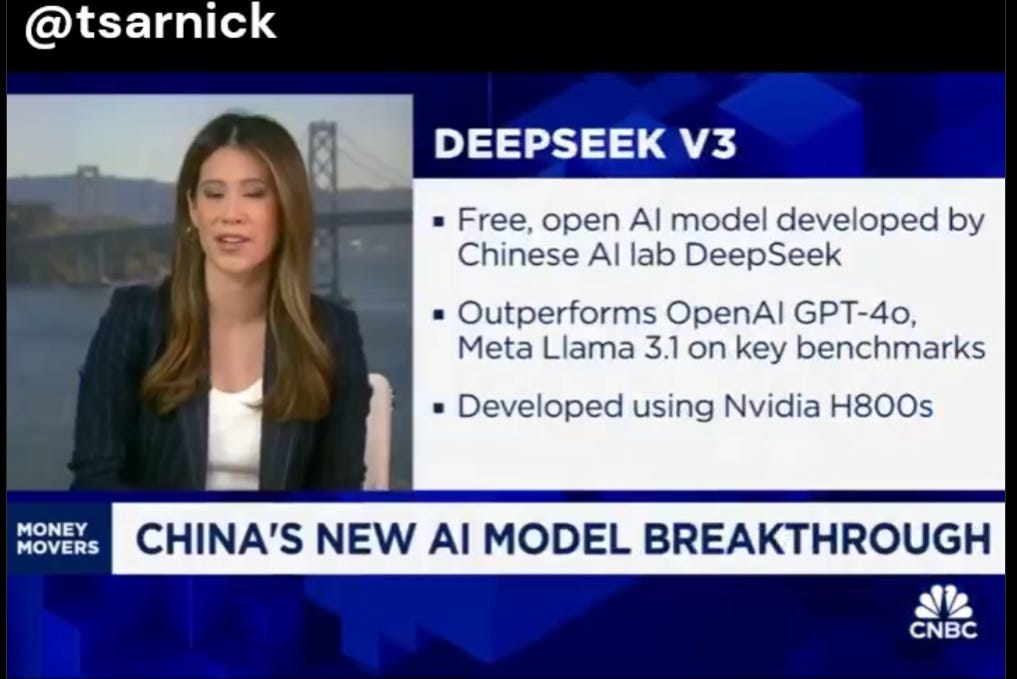
Bijaculture
FollowOverview
-
Founded Date April 24, 1990
-
Sectors Other
-
Posted Jobs 0
-
Viewed 39
Company Description
China’s AI Firm Donald Trump Says is a ‘Wakeup Call’ For Silicon Valley

DeepSeek says its most recent AI design is as great as those of its American competitors, was cheaper to develop and it’s readily available for free. What does that mean for US AI supremacy?
A Chinese company called DeepSeek, which recently open-sourced a big language model it declares carries out as well as OpenAI’s most capable AI systems, is now the white hot focal point for the AI community. Its tech is being lauded as one of the very best open-source oppositions to leading American AI designs, stoking anxieties about China’s formidability in the magnifying global AI race and stimulating U.S. startups to re-examine their own work after a foreign rival relatively did so much more with so less resources.
In late December, the little Chinese laboratory, based in Hangzhou, released V3, a language model with 671 billion parameters, which was supposedly trained in 2 months for simply $5.58 million. That’s a cost orders of magnitude less than OpenAI’s GPT-4, a bigger design at an approximated 1.8 trillion criteria, however developed with a $100 million rate tag. Recently, DeepSeek threw down another onslaught, releasing a model called R-1, which it declares rivals OpenAI’s o1 model on what’s called “thinking jobs,” like coding and resolving complex mathematics and science issues. OpenAI charges users $200 monthly for such models; DeepSeek uses its own for free.
The power of DeepSeek’s design and its prices are currently shifting the method American AI startups run their businesses. It’s a cheap, engaging alternative to offerings from incumbents like OpenAI, Jesse Zhang, CEO of Decagon, which builds AI agents for customer care, told Forbes. DeepSeek’s new design will likely force American AI giants like OpenAI and Anthropic to reassess their own rates.
Eiso Kant, CTO and co-founder of Poolside AI, a unicorn that AI for software engineering, told Forbes that DeepSeek’s strength remains in its engineering ability to do more with less.
“What DeepSeek is showing the world is that when you put a strong focus on making your training compute-efficient, you can do a lot,” he stated. “There’s extraordinary things that you can continue to squeeze out of these Nvidia chips to make them incredibly more effective.”
“It’s sort of wild that someone can enter and invest hundreds of countless dollars for a closed source design. And after that all of an unexpected you get an open-source one that’s simply out there free of charge.”
With OpenAI’s o1 design allegedly bested on particular standards, some startups have actually currently started obtaining information to train advanced systems, Manu Sharma, CEO of information labeling company Labelbox informed Forbes. “I believe the AGI race is kind of reset in lots of ways,” he said. “We are going to simply see much more competitiveness across the board.”
Alexandr Wang, the billionaire CEO of training data leviathan Scale AI, recently called the model “earth shattering.” And Aravind Srinivas, CEO of $9 billion-valued AI search start-up Perplexity has said that he prepares to incorporate the model into the primary search product. AI chip business Groq has actually already included DeepSeek’s R1 design to its language processing units. (In June, Forbes sent Perplexity a stop and desist after implicating the start-up of using its reporting without consent.)
Others are less amazed. Writer CEO May Habib informed Forbes she’s not surprised that DeepSeek’s designs, trained on a considerably smaller sized budget, are able to match the most intelligent designs in the US. In October, Writer introduced a model that was trained with just $700,000, when it cost $4.6 million for OpenAI to construct a model with comparable capabilities. The business used synthetic information to lower its training expenses.
“Even before DeepSeek’s design exploded on the scene, we have actually been stating that these models are commoditizing. They’re getting more and more distributed,” Habib said.
Over the weekend, as buzz about the company grew, DeepSeek went beyond ChatGPT on Apple’s app shop, ranking No. 1 for free app downloads in the United States. Then, on Monday, a number of U.S. tech stocks nosedived as panic around DeepSeek’s effective model launch spread. By day’s end, AI chip leviathan Nvidia’s market cap had been shaved down almost $600 billion.
It was a shocking upending of the AI world order. “It’s sort of wild that someone can go in and spend numerous countless dollars for a closed source design,” Greg Kamradt, president of ARC Prize, a not-for-profit that standards AI models, told Forbes. “And then suddenly you get an open-source one that’s just out there totally free.”

For weeks DeepSeek’s models have been admired by some of the most prominent names in the AI world including Meta’s chief AI researcher Yann LeCun, OpenAI cofounder Andrej Karpathy and Nvidia’s senior research study researcher Jim Fan. But news of the company’s most current achievement has sent America’s AI heavyweights scrambling to determine just how the Chinese business is getting such impressive results while investing a lot less money.

“Deepseek R1 is AI’s Sputnik moment,” investor-billionaire Marc Andreessen wrote on X.

“The release of DeepSeek, AI from a Chinese company, ought to be a wakeup call for our markets that we need to be laser-focused on competing to win.”
Despite the pomp and bombast of the Trump administration’s current AI statements, DeepSeek has actually heightened worries that the U.S. might be losing its AI edge – especially because it’s been so successful in spite of the tight US export controls that prevent it from using Nvidia’s cutting-edge AI chips. The company’s most current achievement is a sobering counterpoint to Project Stargate, a joint venture between OpenAI, Oracle and Japanese tech corporation Softbank, to invest $500 billion in AI facilities.

Ahead of a meeting with House Republicans in Florida on Monday, Trump acknowledged the danger. “The release of DeepSeek, AI from a Chinese business, ought to be a wakeup require our markets that we require to be laser-focused on competing to win,” he said.
There are cautions to DeepSeek’s most current accomplishment. Researchers have actually found its AI models tend to self-censor on topics that are delicate to the Chinese Communist Party (CCP). Security researcher Jane Manchun Wong informed Forbes DeepSeek’s models do not respond to questions about Chinese President Xi Jinping and the 1989 Tiananmen Square demonstrations. Beyond this, there are privacy concerns. Data got in into DeepSeek’s models is kept in servers located in China, according to its policies.
Divyansh Kaushik, a vice president at national security advisory company Beacon Global Strategies cautioned Forbes versus individuals utilizing DeepSeek without thorough vetting. “Unless we can have clear nationwide security and totally free speech examinations of Chinese models, they should be dealt with like propaganda arms of the CCP,” he stated. “They need to be treated as Huawei on steroids.”
The problem is DeepSeek’s value proposition: a state of the art AI reasoning design that’s totally free to utilize and open in the closed, fee-based AI world being constructed by companies like OpenAI and Anthropic. “It’s far better to have a Chinese design that is open source versus an American design that is closed source,” said Labelbox’s Sharma.
